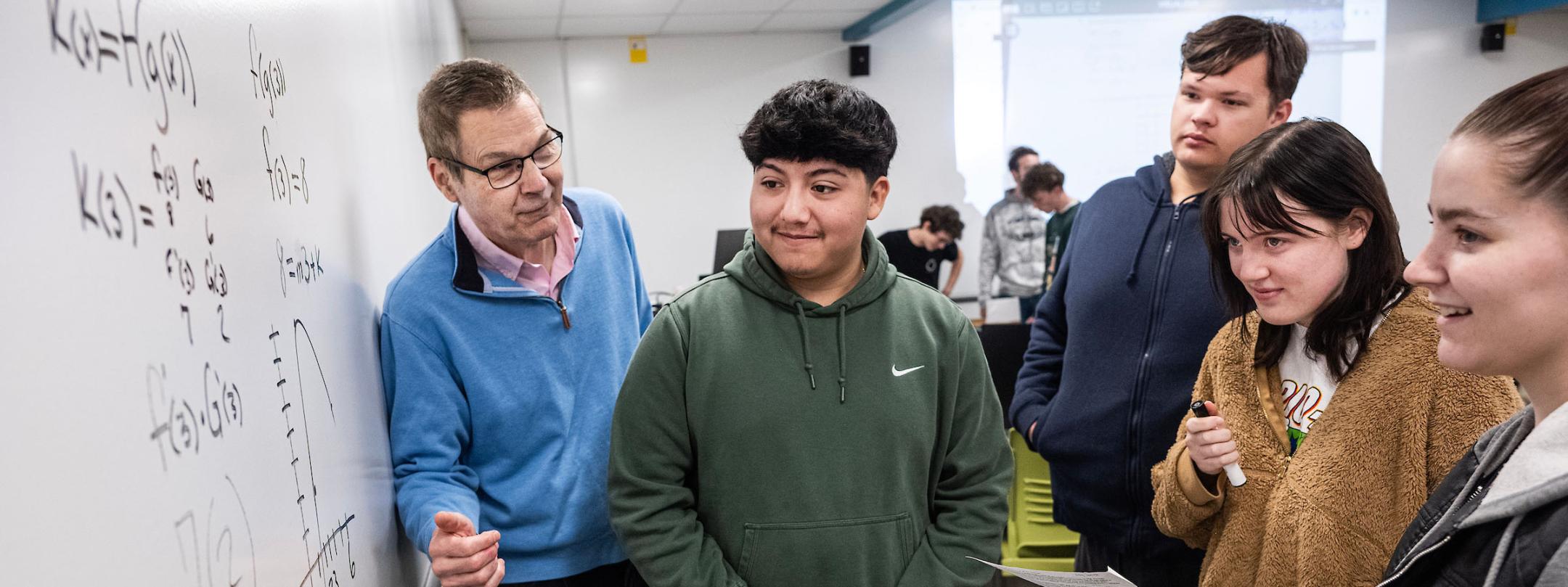
Retention numbers reach 10-year high
By Blake Sebring
September 5, 2024
Keeping students on track and on campus from the day they first arrive through commencement is a challenge for many in higher education. A major component in Purdue University Fort Wayne’s 2020 strategic plan focused on increasing retention, particularly among first-year students.
Because of new programs, PFW has raised the overall return average among first-time, full-time students from approximately 58% to 66.5% over the last three years. That's based on census data released Tuesday by the Office of Institutional Research and Analysis. It's also 2.2% higher than last year’s fall semester retention numbers, and a 10-year high for PFW, according to Irah Modry-Caron, the office’s executive director.
At the start of the fall 2024 semester, over 88% of all students enrolled in the spring 2024 semester returned.
“The increases in initial retention paired with continuous re-enrollment of students beyond the first year demonstrates great progress and establishes a foundation on which to build,” said Kent Johnson, executive director for academic accountability and student success. “We were able to get a structure in place working closely with faculty and support units across the university to build relationships that provided the space to implement a new advising structure.”
The College of Science, the College of Engineering, Technology, and Computer Science, and the College of Visual and Performing Arts are returning over 90% of last year’s first-year students, with the other colleges meeting or exceeding 80%.
“Retaining a student takes the full effort of the entire university. Increasing retention by over 2% from fall to fall indicates a succinct, focused team approach to engagement, advising, teaching, and wrap-around support,” said Krissy Surface, vice chancellor for the Division of Enrollment Management and the Student Experience. “While there is more work to be done, we should all pause to celebrate this collective progress! As a university, we will never be able to out recruit a retention problem, but it is through increased retention and recruitment that we will continue to grow enrollment, gain the necessary additional resources, and make PFW an even better place for students, faculty, and staff alike to learn, educate, and work together.”
Spearheading the changes, Johnson said the university invested in prioritizing student success, which has led to improved retention rates in recent years. Those efforts included developing the First Year Advising Center, which opened two years ago and provides increased student/advisor interaction; enhancing advising centers in the specific colleges; and helping the Center for the Enhancement of Learning and Teaching evolve with more personnel to increase faculty support.
As the overall model was implemented, PFW also invested in technology to support data-informed advising and interventions to aid students and facilitate communication with advisors, faculty, tutors, and other support units across campus. An example is the new Navigate website.
Besides engaging in a project led by David Cochran, professor of systems engineering and director of systems engineering, to guarantee students have clear, consistent pathways that are effectively communicated across campus, the Division of Enrollment Management and the Student Experience continues developing new programming to increase student engagement and success, such as last year’s student enrollment management plan. PFW also joined a three-year program through the Higher Learning Commission’s Student Success Academy.
“We are conducting multiple inventories to help us identify gaps in student success so that we can address it at a granular level that assures all students benefit,” Johnson said. “We will be engaging the entire university community to develop and implement a student success plan that will further increase retention and drive completion of degrees.”




